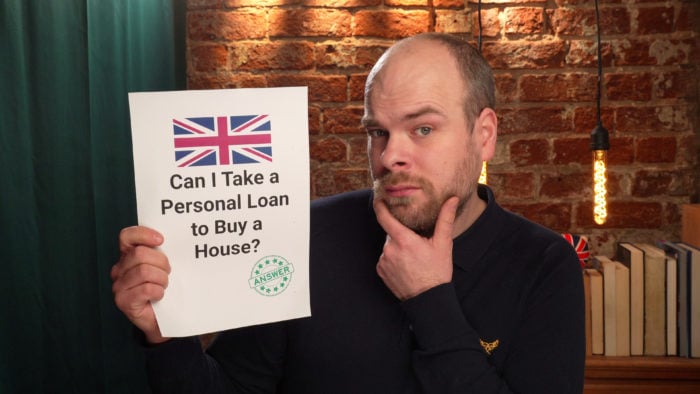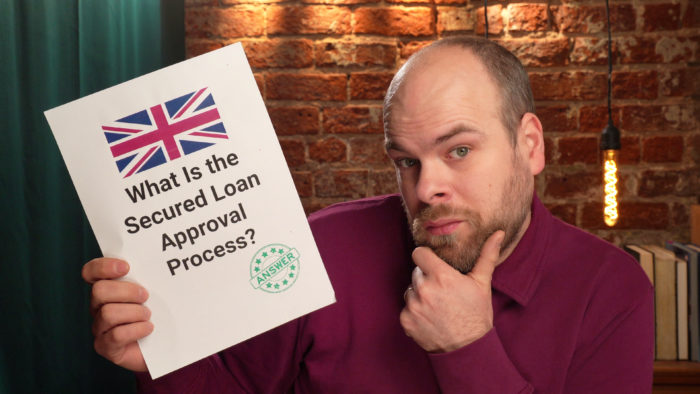Using a Personal Loan for Home Purchase: Rules to Know
Representative example: If you borrow £34,000 over 15 years at a rate of 8.26% variable, you will pay 180 instalments of £370.70 per month and a total amount payable of £66,726.00. This includes the net loan, interest of £28,531.00, a broker fee of £3,400 and a lender fee of £795. The overall cost for comparison is 10.8% APRC variable. Typical 10.8% APRC variable

Representative example: If you borrow £34,000 over 15 years at a rate of 8.26% variable, you will pay 180 instalments of £370.70 per month and a total amount payable of £66,726.00. This includes the net loan, interest of £28,531.00, a broker fee of £3,400 and a lender fee of £795. The overall cost for comparison is 10.8% APRC variable. Typical 10.8% APRC variable
Are you thinking of using a personal loan to buy a house? You’re not alone. Over 6,900 people visit our website each month, seeking advice on secured loans. Research shows that in the UK, early repayment fees for secured loans have more than doubled since the start of the decade, peaking in 2018.1
We know this can be a big decision, and there might be a lot of questions on your mind. But don’t worry; we’re here to help with clear, simple advice.
In this guide, we’ll explore:
- Is it good to use a personal loan to buy a house?
- The true cost of a bad secured loan.
- How a personal loan can be used for the initial deposit on a mortgage.
- What kind of impact personal loans have on your credit score.
- What happens if you don’t pay back a short-term loan.
We understand that being in debt or considering a secured loan is a serious matter. It’s important to know all the facts before taking a big step. Remember, we’re here to support you with clear and simple advice.
Can you use a personal loan for the initial deposit/down payment on your mortgage?
When buying a standard house using a traditional mortgage loan, your initial payment can range from 3% to 20%, depending on the lender and your financial situation. Theoretically, you can get a personal loan to pay the initial deposit. However, you may find this difficult to do in reality.
Some mortgage lenders do not allow this. When mortgage lenders assess whether or not to approve a mortgage loan, they calculate something known as a Debt-to-Income (DTI) ratio.
Debt-to-Income (DTI) ratio
This is a comparison of how much debt you have compared to how much you earn. For instance, if you owe £1,600 of debt and you have a gross monthly income of £4,000, your ratio is 40%. You can calculate your DTI ratio manually, or you can use a debt calculator.
Your DTI ratio needs to be below a certain threshold for your mortgage application to be approved. As you can probably tell, taking out a personal loan for the down payment will increase your DTI ratio significantly.
This might cause the mortgage lender to reject your application even if they had initially approved it.
As I see it, taking out a loan to make your down payment is also a red flag for lenders. Your mortgage lender will feel that you can’t manage your money properly, and they will be apprehensive about approving your loan.
Can you pay a house deposit on a credit card?
It is technically possible to pay your house deposit on a credit card. However, most mortgage lenders require at least 5% of the deposit to come from savings. Finding a lender that accepts unsecured finance as a full deposit is very difficult, and opting for this payment method would significantly limit your mortgage options.
Is it a good idea to take a personal loan to buy a house?
When it comes to loans for homes, in most cases, it’s not wise to take out a personal loan to buy a house. Personal or short-term loans often have much shorter repayment terms and plans, and lenders usually charge a higher interest rate than mortgage loans.
A mortgage loan is usually the best bet if you want to buy a large or standard-sized family home. However, if you want to buy a tiny house, an apartment, or even a mobile home, you may want to look into the possibility of a short-term loan rather than a mortgage loan. Finding a lender who will give you a mortgage loan to buy a tiny apartment or a mobile home can be difficult.
When comparing personal loans and mortgages in this case, borrowing money using a personal loan may be more prudent.
Secured vs unsecured loans
You must remember that a personal loan is not necessarily a secured loan like a mortgage. For a mortgage, the house itself is put up as collateral for the loan. If you default on your debt, the lender can seize your home. However, personal loans can be either secured or unsecured. Unsecured loans usually have a much higher interest rate.
Secured loans typically have lower interest rates. So, if you want a secured personal loan, you will probably have to offer up an initial cash deposit as your collateral.
Secured vs Unsecured Loans, a Breakdown
There are many differences between secured and unsecured loans, so it’s really important that you know the main differences between them to make an informed decision.
Here’s a quick table to summarize them.
| Category | Secured Loan | Unsecured Loan |
|---|---|---|
| Collateral Required | Yes, typically a property | No collateral required |
| Typical Loan Amount | Large amounts – typically above £20,000 | Up to £25,000 |
| Loan Terms | Longer terms, up to 25 or 30 years | Shorter terms, usually up to 7 years |
| Interest Rates | Variable and often lower; influenced by LTV and loan term | Often fixed; influenced by borrower’s credit score |
| Approval Time | Typically 1-2 months | Usually within 1-2 weeks |
| Risks | Losing the asset if repayments are not kept up | Loan growing due to interest, especially for those with poor credit |
Lender |
APRC |
Monthly payment |
Total amount repayable |
|---|---|---|---|
| United Trust Bank Ltd | 5.69% |
£218.21 |
£26,185.42 |
| Equifinance | 6.2% |
£219.10 |
£26,291.67 |
| Selina | 6.34% |
£219.34 |
£26,320.83 |
| Pepper Money | 6.86% |
£220.24 |
£26,429.17 |
| Together | 7.4% |
£221.18 |
£26,541.67 |
| Norton | 9.05% |
£224.05 |
£26,885.42 |
| Masthaven | 9.65% |
£225.09 |
£27,010.42 |
| Loan Logics | 11.2% |
£227.78 |
£27,333.33 |
| Evolution | 11.28% |
£227.92 |
£27,350.00 |
Representative example: If you borrow £34,000 over 15 years at a rate of 8.26% variable, you will pay 180 instalments of £370.70 per month and a total amount payable of £66,726.00. This includes the net loan, interest of £28,531.00, a broker fee of £3,400 and a lender fee of £795. The overall cost for comparison is 10.8% APRC variable. Typical 10.8% APRC variable.
Search powered by our partners at LoansWarehouse.
The true cost of a bad secured loan
Think about this.
If you get a £30,000 secured loan at 4% on a 15 year term, it’ll cost you £221 per month to pay back. That exact same loan at 5% is about £18 per month more expensive. Not a big deal right?
Well that’s a full £2,916 more expensive over the entire term.
Fill out the short form below to access the best secured loan rates available from the UK’s leading lenders.
What are some problems you could face?
The problem with taking out several short-term loans, or just a single one, is that debtors can soon find themselves in debt with no real way of paying it off. Reasons can include increasing interest rate or the debtor losing their job.
While it’s true that lenders must assess debtors thoroughly before approving them for loans, the responsibility lands on the debtors. If you fail to make payments towards your debt, you will default on your loans. As a result, you will start incurring further charges. These could be in the form of late payment fees or even debt collector costs.
Not only will your debt keep on building, but your lender might hire a debt collector to retrieve your debt.
What happens if you don’t pay back a short-term loan?
It is essential to consider Debt management when buying a house. Short-term loans are usually unsecured, and lenders don’t have any assets they could seize from you if you default on your loan. Thus, their only choice is to pursue you and ask you to pay your debt to them.
If you fail to pay for your short-term loan(s), your lender could take out a County Court Judgment (CCJ) against you.
Failing to pay your CCJ can have much more dire consequences than failing to pay your lender.
The court could send bailiffs to your home. They can seize your belongings and sell them off to compensate for the debt you have not repaid.
As you can see, there are several risk factors of property financing. You should keep these factors in mind when you’re considering different options for borrowing money to buy your house.
» TAKE ACTION NOW: Compare deals from the UK’s leading lenders
What are bridging loans?
If you’re already a homeowner looking to sell your current house to buy a new one, you may want to consider bridging loans. A bridging loan is a short-term loan that you can use to fund the purchase of new property.
If you’ve sold your current house but don’t have enough money to buy a new one, this loan is used to ‘bridge the gap’ to buy the new property for yourself.
Unlike conventional mortgages, these types of loans are relatively short-term. From my experience, if you’re not a first-time buyer and are looking to sell your old house to buy a new one, then it could be a prudent solution that you can look towards.
Impact of short-term loans on property purchase
As you can probably imagine, bridging loans do not offer as high an amount of money as a mortgage would. Another thing to consider when considering bridging loans is their high-interest rates. It’s common for bridging loans to have interest rates as high as 18%.
Secured loans for all purposes
- Stuck paying high interest on credit card debts & loans?
- Looking to fund a home improvement project?
- Dreaming of finally taking the once-in-a-lifetime trip?

Polly
“This was by far possibly one of the nicest experiences I’ve had getting a secured loan.”
Reviews shown are for Loans Warehouse. Search powered by Loans Warehouse.
Mortgage alternatives
If you are looking for a way to purchase a property, there are other property finance options available. For instance, shared ownership is a type of mortgage in which first time buyers can purchase a share of a property. With this type of lending solution, you pay a mortgage on your share and make rent payments for the rest.
Additionally, there are other affordable home ownership schemes in the UK. It is a good idea to do your research to see what’s out there.
Can you use a bridging loan for the down payment on your mortgage?
As I mentioned earlier, the down payment on your mortgage can be between 3% to 20% of the property’s value. Hence, it does make sense to use a bridging loan to pay for the initial deposit on your mortgage. However, the same issues apply to this option for a typical personal loan.
Remember that a bridging loan is like any other personal loan, and your mortgage lender would not favour the decision of making a down payment by taking out a bridging loan.
This can only work if you can prove with certainty to the mortgage lender that you will be able to pay back the debt incurred by the bridging loan within a short time, such as six months or a year.
That, too, while keeping up with your mortgage repayments at the same time.

